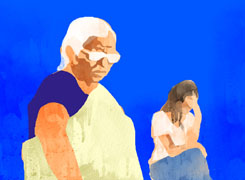I am a govt employee. I earn Rs 2 lakh per month after Income tax. I invest 40k per month in service PF, 10k in service insurance( 80% goes to saving & 10% to insurance ), 25k in PPF for my family( wife & son), 18k in MFs, 5k in NPS, 5k in shares per month ( Total approx 1 lakh per month). I also have a 3bhk flat ( present value 1cr) in Class B city since 2021 for which i took loan and paying EMI of 38k per month. As of now i have accumulated 15 lakh in service PF, 12 lakh in insurance savings, 3 lakh in family PPF, around 5 lakh in MF, 3 lakh in Share Mkt. I have around 10-12 yrs of service balance in the govt job. I want to create a corpus of min 5cr wen retire. How should i plan my investment journey ahead ?
Ans: First, I must commend you on your diligent savings and investments. Your structured approach is commendable, especially given your steady income as a government employee. With 10-12 years of service left and your goal to amass a Rs 5 crore corpus by retirement, let’s map out a clear plan to achieve this.
Understanding Your Current Financial Situation
Let’s break down your current finances:
Monthly Income:
You earn Rs 2 lakhs post-tax every month, providing a robust base for savings and investments.
Current Investments:
Service PF: Rs 40,000/month.
Service Insurance: Rs 10,000/month.
Family PPF: Rs 25,000/month.
Mutual Funds (MFs): Rs 18,000/month.
Shares: Rs 5,000/month.
NPS: Rs 5,000/month.
Property:
You own a 3BHK flat valued at Rs 1 crore, with an EMI of Rs 38,000/month.
Current Savings and Investments:
Service PF: Rs 15 lakhs.
Insurance Savings: Rs 12 lakhs.
Family PPF: Rs 3 lakhs.
Mutual Funds: Rs 5 lakhs.
Shares: Rs 3 lakhs.
Strategic Evaluation of Your Investments
To achieve your Rs 5 crore goal, let’s evaluate each component of your current portfolio and consider strategic adjustments.
Service Provident Fund (PF)
Current Investment: Rs 40,000/month.
Accumulated Value: Rs 15 lakhs.
Analysis:
Safety and Returns: Your PF is safe with moderate returns and is a good long-term saving tool.
Tax Efficiency: PF contributions and interest earned are tax-exempt under certain limits.
Recommendation:
Continue Contributions: Keep contributing Rs 40,000/month. It’s a solid foundation for your retirement savings.
Regular Monitoring: Track the accumulated value to ensure it aligns with your goals.
Service Insurance (Savings and Protection)
Current Investment: Rs 10,000/month.
Accumulated Value: Rs 12 lakhs.
Analysis:
High Cost, Low Returns: Insurance-cum-savings plans often have high premiums with lower returns compared to other investment options.
Recommendation:
Consider Surrendering: Evaluate the surrender value and consider redirecting these funds into mutual funds.
Get Pure Term Insurance: For protection, a term plan is more cost-effective and provides higher coverage.
Public Provident Fund (PPF)
Current Investment: Rs 25,000/month.
Accumulated Value: Rs 3 lakhs.
Analysis:
Safe and Secure: PPF is risk-free with decent long-term returns and tax benefits.
Recommendation:
Continue Contributions: Maintain this contribution for its tax efficiency and steady growth.
Maximize Tax Benefits: Ensure you leverage the Section 80C deductions fully with your PPF contributions.
Mutual Funds (MFs)
Current Investment: Rs 18,000/month.
Accumulated Value: Rs 5 lakhs.
Analysis:
Growth Potential: MFs, especially actively managed ones, offer the potential for higher returns.
Diversification: They provide a diversified portfolio across sectors and assets.
Recommendation:
Increase SIP: Consider increasing your SIPs to Rs 25,000/month to boost growth.
Review Fund Performance: Regularly review and choose funds with a strong performance record.
Shares
Current Investment: Rs 5,000/month.
Accumulated Value: Rs 3 lakhs.
Analysis:
High Risk, High Reward: Direct equity investment can offer high returns but comes with significant risk.
Recommendation:
Continue Investment: Maintain your Rs 5,000/month investment. It’s a good strategy for capital growth.
Diversify Across Sectors: Ensure you’re investing across different sectors to mitigate risks.
National Pension System (NPS)
Current Investment: Rs 5,000/month.
Analysis:
Long-Term Security: NPS provides a mix of equity and debt exposure, beneficial for long-term retirement planning.
Tax Efficiency: Contributions up to Rs 50,000 provide additional tax benefits under Section 80CCD(1B).
Recommendation:
Consider Increasing Contribution: If possible, increase your NPS contribution to leverage the tax benefits and long-term growth.
Managing Your Real Estate Investment
Your 3BHK flat is a significant asset, valued at Rs 1 crore. Here’s how to manage this investment:
EMI Management:
Monthly EMI: You’re currently paying Rs 38,000/month.
Prepayment Strategy: If possible, make additional payments to reduce the loan tenure and overall interest burden.
Equity Build-Up:
Property Appreciation: Monitor the value of your property and the equity you’re building up with each EMI payment.
Avoid Over-Reliance: While property is valuable, it’s essential not to rely solely on it for your retirement corpus.
Planning for Your Rs 5 Crore Corpus
To reach your Rs 5 crore goal, here’s a step-by-step approach:
Step 1: Calculate Future Value of Current Investments
Service PF and PPF: Estimate the future value considering the current rate of interest.
Mutual Funds and Shares: Use an estimated annual return to project the future value.
Insurance Savings: Consider the value if surrendered and reinvested.
NPS: Factor in growth with regular contributions and the equity-debt mix.
Step 2: Increase Monthly Savings
Reallocate Savings:
Redirect from Insurance: Move funds from insurance to higher-yielding mutual funds.
Increase SIPs and NPS: Boost your monthly SIPs and NPS contributions as suggested.
Set a Savings Target:
Monthly Savings Goal: Aim to save at least 50% of your income, adjusting as your salary increases.
Utilize Bonuses and Windfalls:
Reinvest Wisely: Any bonuses or additional income should be reinvested to accelerate your growth.
Step 3: Monitor and Rebalance Your Portfolio
Regular Review:
Quarterly Check: Assess your portfolio every quarter to ensure it’s aligned with your goals.
Adjust Investments:
Shift Allocation: Based on performance, rebalance your investments between equity and debt as needed.
Stay Informed:
Market Trends: Keep an eye on market trends and economic factors that may impact your investments.
Step 4: Plan for Additional Income Streams
Consulting or Part-Time Work:
Leverage Expertise: Post-retirement, consider consulting or part-time work to supplement income.
Passive Income:
Dividend and Interest Income: Invest in funds that provide regular dividends or interest as passive income.
Building a Solid Financial Foundation
To ensure a stable financial journey, focus on these foundational steps:
Emergency Fund
Buffer for Uncertainties:
3-6 Months of Expenses: Maintain an emergency fund that covers 3-6 months of living expenses. This is crucial for unforeseen events.
Accessible and Safe:
Liquid Investments: Keep this fund in a savings account or a liquid mutual fund for quick access.
Adequate Insurance Coverage
Life Insurance:
Pure Term Plan: Ensure you have sufficient life cover through a term plan, which is cost-effective and provides substantial coverage.
Health Insurance:
Comprehensive Coverage: Have a comprehensive health insurance plan for yourself and your family to cover medical expenses.
Long-Term Financial Goals Beyond Retirement
As you plan for retirement, consider these long-term goals:
Children’s Education and Marriage:
Dedicated Fund: Start a separate fund for your children’s education and marriage expenses. Consider long-term equity mutual funds for this purpose.
Travel and Lifestyle:
Bucket List: Plan for post-retirement travel or hobbies. Allocate funds specifically for these lifestyle goals.
Legacy Planning:
Wealth Transfer: Consider how you’d like to pass on your wealth. Estate planning and creating a will are essential steps.
Final Insights
Joydev, your disciplined approach to savings and investments sets a strong foundation for achieving your Rs 5 crore retirement corpus. By reallocating your funds, increasing your SIPs, and strategically managing your portfolio, you’re well on your way to reaching your goal. Continue to stay informed, regularly review your investments, and seek guidance from a Certified Financial Planner (CFP) for personalized advice. Your dedication to planning and foresight will undoubtedly lead to a prosperous and secure retirement.
Best Regards,
K. Ramalingam, MBA, CFP,
Chief Financial Planner,
www.holisticinvestment.in



























